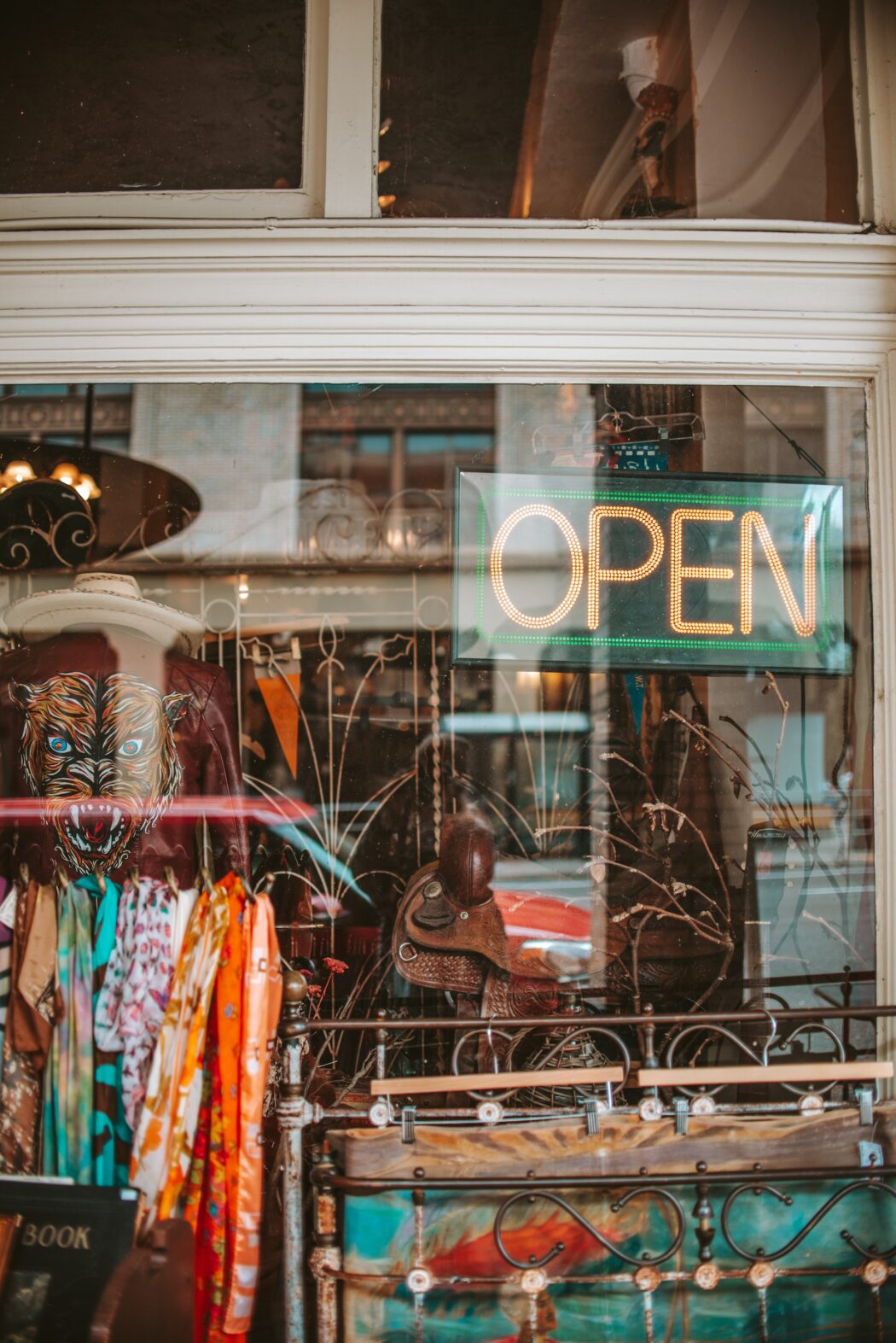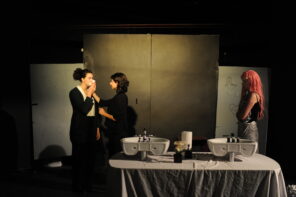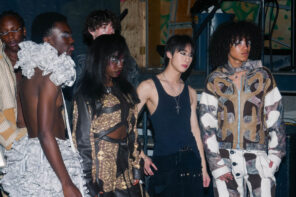Maximalism is back! Across McGill’s campus, from the library to class, McGillians embrace crazy colours, intricate layering, extravagant jewelry and abstract makeup. Maximalism, which can present in an infinite number of aesthetics, found its roots in the years following the Second World War when people were eager to express themselves after years of rationing and restriction. Where our modern version of the aesthetic stems from is less clear, but some have attributed it to the style originating in the Harajuku district of Japan, where young women and girls began wearing expressive makeup, large quantities of accessories, and hairstyles that can still be viewed in the district today. Either way, after three years of COVID sweat suits, young people are ready to break conventional fashion rules and re-embrace this playful stylistic philosophy.
As students attempt to distinguish themselves while also maintaining the ability to make it up the hill to McMed for their 8:30 a.m. class, moon boots, fur coats and statement jewellery are go-to’s for the maximalist Montreal student.
Many aesthetics regularly engage with the broadly definable concept of maximalism, but what does this look like in the day-to-day within McGill’s context? Maximalism is often thought of as bright, eye-catching, and overall impractical; but forms of maximalist style and design are all around us. As students attempt to distinguish themselves while also maintaining the ability to make it up the hill to McMed for their 8:30 a.m. class, moon boots, fur coats and statement jewellery are go-to’s for the maximalist Montreal student. From the icon Dolly Parton herself to that stylistically over the top girl in your econ class, people are adapting forms of pseudo-maximalism to express themself without impeding their ability to move freely. Outside of the classroom, y2k and ‘McBling’ aesthetics embrace velour and glitter in the various themed parties of the McGill ghetto.
In contrast to McGill, if you’ve ever made the pilgrimage to Queen’s or Western for Foco or St. Patty’s, you’ve most likely encountered more Aritzia Melina pants than what the mainstream would consider to be maximalist fashion. Why does maximalism seem to thrive at McGill compared to many other Canadian universities, especially those in smaller towns? McGill’s urban environment places it’s students within walking distance of everything from the eccentric earrings available in Chinatown to the abundance of curated vintage stores in the Plateau.
The modern maximalist story unravels by breathing new life into old pieces.
In a world of overconsumption, maximalism may seem like an irresponsible direction for the future of fashion, but in the search for unique pieces, fashionistas across the world are turning to second-hand suppliers and DIYs for cheap, one-of-a-kind pieces. Beyond that, shopping at non-chain thrifts, like Le Chainon on St Laurent, support local organizations and allow you to let your maximalist heart run wild. If venturing past Park isn’t your style, McGill also boasts student clubs and pop-ups that encourage artistic expression through minimal consumption. Organizations like Circle of Fashion (@circleoffashionmcgill) and P(h)assion (@phassionmcgill) inspire students to embrace both maximalist and groovy choices by supporting McGill’s up-and-coming fashion designers and bringing the fashion community together. There are also clothing swaps hosted around campus by great student-run initiatives that will keep your bank balance high and creativity flowing, all while minimizing your carbon footprint. Fashion Revolution McGill (@fashion_revolution_mcgill) and the SSMU have hosted multiple swaps this semester.
If you find yourself in search of inspiration off-campus, there are a number of sources that I can personally recommend. In a more traditional sense, you can draw from houses that have reached mainstream success, including Vivienne Westwood or Moschino. Alternatively, lesser-known artists like Who Decides War embrace graphic-heavy streetwear and Conner Ives’ bright, geographic designs are spearheading a new age of over-the-top design. If going straight to the source doesn’t quite fit into your study schedule, check out magazines like Virtus and Boy.Brother.Friend which curate lookbooks filled to the brim with originality both in their featured looks and overall presentation.
In the age of the internet, access to maximalism is right at your fingertips, and all you have to do is click enter.
For me, I like to draw from creators that are on the platforms I’m already using, such as Instagram and TikTok. Courtney Covino is a tattoo artist who mostly makes makeup tutorials and shares outfit snapshots on her Instagram, with her style embracing grunge and rock influences. Alternatively, Sarah Campo and Kristen Bateman are major magazine columnists working everywhere from Vogue to the New York Times to Elle, who both share their personally-curated neon-heavy outfits, and the latest from fashion weeks around the world on TikTok. If the fashion world is completely foreign to you, perhaps you can find your muse in the non-fashion arts through painters such as Kate Pincus-Whitney or far-out classics like Lisa Frank. In the age of the internet, access to maximalism is right at your fingertips, and all you have to do is click enter.
***
The modern maximalist story unravels by breathing new life into old pieces. Maximalists receive double-takes. They question stylistic choices. They reimagine utility and re-dictate what matches or what doesn’t. They exaggerate colour through both variation and repetition. Though their ideology of “more is more” may seem daunting, they are our recycling future. Curating your own personal style allows you to truly feel like you exist outside of the fast-paced trend turnover we have become too familiar with. Whether that means sticking to the basics or completely getting out of your comfort zone, don’t let companies or others tell you how to style your life! Maximalism provides a fresh perspective on the world—overrun with “clean girl” aesthetics and business casual Desautel students. McGill’s culture allows its students to be eccentric, and I encourage each and every one of you to take advantage of this.








